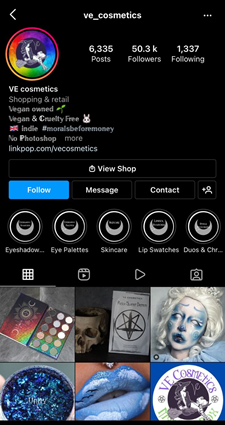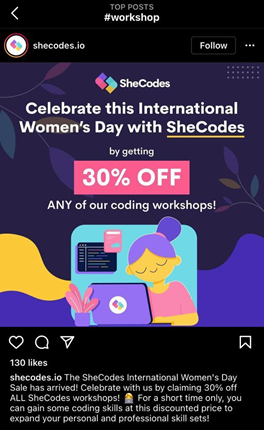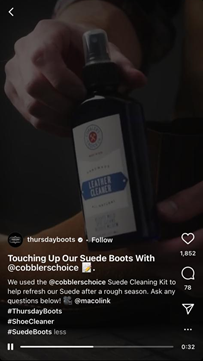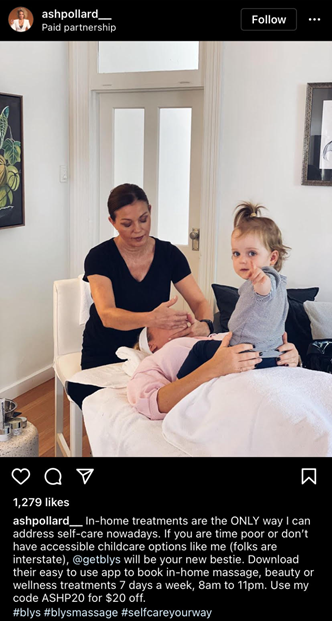Most people are aware that Instagram can yield an income, but not many know exactly how to do it. My agency Contentworks, works with brands to amplify their content, often through social media. Whether you’re selling million-dollar investments or twenty dollar lipsticks, here’s how to monetise Instagram.
Overview
Instagram has over one billion active monthly users. For several years now it’s been expected of brands to actively use Instagram to promote their businesses. Over 90% of users follow at least one brand on the platform.
Instagram’s biggest markets include beauty, health and fitness, travel, fashion, lifestyle, business, and animals. But, that doesn’t mean you won’t see success if your business is not in one of those categories.
But what exactly is it about Instagram that makes it so appealing for both brands and individuals? First there’s the potential to reach huge audiences. Ultimately though, business-orientated accounts are there to make money and Instagram is one of the best social media platforms for securing a strong ROI. Here are 5 tips that can help your brand cash in on Instagram.
#1 Sell products
This may seem like an obvious one, but most brands don’t take advantage of Instagram’s features for direct-to-customer selling. Using ‘Instagram Shopping’, you can sell products directly through the app if you have a physical product by using its in-app online marketplace.

 Left you can see VE Cosmetics’ Instagram page.
Left you can see VE Cosmetics’ Instagram page.
Just above the Follow/Message/Contact buttons you can see the ‘View Shop’ button.
Tapping this takes customers to VE’s online Instagram shop (right image). Here, customers can view all of the brand’s products and read more about them by tapping on the images. You can also organise your products by ‘collections’ that could centre around seasonal or trending topics like Christmas.
If you’re based in the US, customers can check out directly on Instagram. For everyone else, you’ll need to connect the product page with the corresponding page on your site which the customer can then head to using a link.
If that’s the case, Instagram Shopping works best if your brand already has a shoppable website. If you don’t, you could simply close sales in your DMs.
Bonus tip: Did you know that you can now not only ‘tag’ products on Instagram posts but on stories and reels too? This means that more potential customers can spot a product they like, tap the tag, and begin shopping. Even more reason to get your IG shop set up.
#2 Workshops and experiences
Selling services is another way to make money on Instagram. People are often interested in learning new skills. If you’re a photographer, you could sell photography workshops. Not only will you get money from the workshop, but you can also increase your brand visibility, credibility, and audience size.
Events like these can be done in person or online. If you opt to meet your audience personally, it’s good to bear in mind that people want experiences to tell their friends about. Offering Instagrammable events is always a good idea, this will further spread the word around about your brand.
You can of course offer online courses, webinars and workshops. You may have more interest this way since your audience can partake no matter where they’re based. SheCodes offered a 30% discount to celebrate International Women’s Day.

The more followers you have on Instagram, the more money you can make. Rates are also determined by engagement, quality of content, name recognition, audience demographic, and skill set. The standard is $10 per 1,000 followers. So, improving your follower count and maintaining good engagement will contribute to your long term ROI.
#3 Sell subscriptions
The subscription model creates a predictable future revenue stream. This recurring revenue can ensure the viability of your business in times of turbulence and financial fluctuations. It also helps in keeping your business operations up and running. Here’s the great part. You can offer subscriptions for premium content or an exclusive club through Instagram. The subscription you offer will depend on your brand’s niche. It could be in the form of pre-recorded classes, early access to products, discounts, or bonuses like free delivery.
Followers usually understand that IG posts present just a cursory glance into the ongoings of your brand. Depending on your niche, it can be a viable option to sell subscriptions to exclusive, premium content. However, subscriptions in the form of exclusive content only work when your audience is very eager to see that content. Social media influencers often stand to gain a lot of interest in exclusive subscriptions. Brands can too if done right.
Sweetshop, The Berry Patch, offers a monthly subscription that allows subscribers access to cookery and business classes, discounts, and their brand’s community. Don’t think that subscriptions can’t be for financial brands too. (We see you). Contentworks Agency has worked with FX brands who gated premium content such as podcasts, webinars and analysis for subscription based traders.
Instagram doesn’t currently offer tools to creators to sell subscription services directly on the platform, although this may change in the future (Instagram is currently testing this feature.) To sell subscriptions now, you’ll either need to build a site with a membership capability which you can then market using Instagram, or share your exclusive offerings via email.
It’s crucial not to disappoint paying members. Ensure that you produce and post new, exciting content regularly and have a backlog of evergreen content ready to go. Your subscribers should always feel they are getting value for their money so that they continue to subscribe, and your service gains a good reputation.
#4 Sponsored posts/Cross-promotion
If you’re looking for a more traditional way to make money on Instagram, you could look into sponsored posts or cross-promotion. With this approach, you post about a product or service from another brand that will be featured on your account. These posts can be in different formats like photos, videos, and even paid ads. It’s always advisable to post content that is relevant to your brand or niche so that your promotion is perceived as genuine and not spammy.
Sponsored posts allow you to promote a service or product of your choice and then have the company pay to promote the post. In this case, you will be paid to post on Instagram while they get their message out there. Cross-promotion works in a similar way but doesn’t necessarily involve one party being paid. Instead, two or more brands team up to mutually promote each other’s brand.


Cobbler’s Choice leather care company teamed up with boot company Thursday Boots Co. to promote their suede cleaning kit. In return, Cobbler’s Choice posted an image featuring several Thursday Boots products. This is a great example of cross-promotion. Both brands are incredibly relevant to one another and their audiences are very likely to be interested in other brands’ products.
They’re also not competitors, you certainly don’t want to ‘team up’ with a brand that will simply outshine you or steal your audience.
Remember – Brands using three or more channels in a campaign enjoy a 287% higher purchase rate than those with a single-channel campaign.
Plus, companies with strong cross-channel customer engagement see 89% of customers return (compared to just 33% for companies with weak cross-channel customer engagement).
#5 Affiliate marketing
You’ve undoubtedly seen affiliate marketing before while scrolling social media. Below is an example of a typical affiliate marketing post.

Affiliate marketing involves serving as an ambassador for brands. When customers buy something because of your recommendation, you get a commission. This strategy isn’t always suitable for brands but works well for individuals that want to monetise Instagram.
- Nearly 65% of affiliate marketers generate traffic by blogging.
- 94% of publishers use multiple affiliate marketing networks.
- Advertisers generate between 15% and 30% of all sales from affiliate programs.
- Affiliate marketing is responsible for 16% of global ecommerce sales.
Typically, you’re provided with a link to promote on your account, or as in the example above, given a unique code to post. When customers click on your link or use your code and buy the product or service, you get a cut. There are tons of affiliate marketing network sites out there (such as AWIN and ShareASale, where you can sign up and receive these links to post on IG. You can also try Amazon Affiliates, or check whether brands you already love have an affiliate programme and then contact them directly.
It’s always best you like and use the products and services you’re selling because audiences can often tell when you are more interested in getting a sale than you are in recommending a brand you genuinely think your followers will enjoy.
If you’re ready to turn Instagram into a decent income stream for you or your brand, start by looking at the 5 methods above. It’s important to remember that any marketing strategy used should lead to business growth. So, if you’re not seeing your audience engage with your content, you should rethink your strategy. Similarly, give a strategy its due time and be sure you devote enough resources to it so that it has a chance to grow.
If your Instgram shop isn’t making sales, instead of immediately discounting this as a viable strategy for your brand, consider why your audience isn’t utilising it. Are your product descriptions vague or uninspiring? Is your shop not organised or laid out? Have you sufficiently promoted your shop so that your audience is aware of it?
Additionally, it’s important to think about your goals on the platform. Is it conversions? More brand awareness? Greater reach? Increased profits? Knowing your goals should direct the strategies you employ. For example, if you want greater brand awareness, organising and marketing a workshop could achieve this. If you’re simply looking to increase profits and already have an Instagram shop set up, look in to sponsored posts, cross-promotion, and affiliate marketing. Focus on Instagram marketing strategies that can grow your business by setting realistic goals unique to your brand.
Want to talk Instagram strategy and ROI? Get in contact.